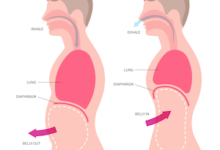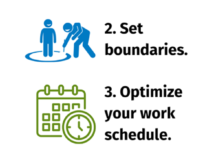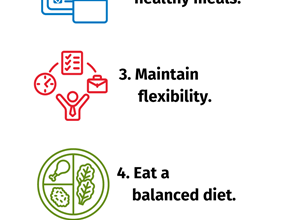Save Your Back! Proper Body Mechanics for Nurses
We know that nursing is demanding work – mentally, emotionally, and physically – but did you know that musculoskeletal injuries in health care occupations are among the highest of all US industries? Both the American Nurses Association and The National Institute for Occupational Safety and Health (NIOSH) are working to establish a safe environment for nurses using Safe Patient Handling and Mobility (SPHM) programs and advocacy.
Safe Patient Handling and Mobility
Standardized mobility protocols and guidance from SPHM programs include prioritizing the use of available equipment over manually moving a patient. When available, use ambulation aids (such as gait belts with handles, canes, walkers, or crutches), transfer devices (such as slide boards or friction reducing slide sheets), manual standing aids, shower chairs or benches, and raised toilet seats or convertible commodes. Powered equipment should also be used, when possible, such as height-adjustable beds and stretchers, bed-wheelchair transfer systems, ceiling-mounted lifts, portable floor lifts and powered air-assist inflatable transfer systems (Beauvais & Frost, 2014; Dickinson et al., 2018).
Proper Body Mechanics
Even when using equipment – and especially if you do need to move a patient without equipment – it is important to use proper body mechanics to reduce your risk of injury. Here are some tips to keep you safe:
- Set your feet in a solid wide base.
- Keep your head upright and hold your shoulders back.
- Keep the patient close to your body to minimize forces on it.
- Bend your knees and use the momentum from your legs (not your back) to move or lift the patient.
- Don’t twist; pivot instead.
- Pay attention to your limits; don’t try to do more than you can handle.
- Work together with your colleagues, including those in other disciplines, such as physical therapy.
What else can you do?
Back pain and injury can be debilitating so be sure to use the equipment and programs available at your facility, and if necessary, get involved in developing programs to keep you, your colleagues, and patients safe.
References:
Bayada. (2016, September 16). 6 Nurse-approved Ways to Protect Your Back on the Job. https://blog.bayada.com/work-life/6-nurse-approved-ways-to-protect-your-back-on-the-job
Beauvais, A., & Frost, L. (2014). Saving our backs: safe patient handling and mobility for home care. Home Healthcare Now, 32(7), 430–436. https://doi.org/10.1097/NHH.0000000000000110
Dickinson, S., Taylor, S., & Anton, P. (2018). Integrating a Standardized Mobility Program and Safe Patient Handling. Critical Care Nursing Quarterly, 41(3), 240–252. https://doi.org/10.1097/CNQ.0000000000000202






